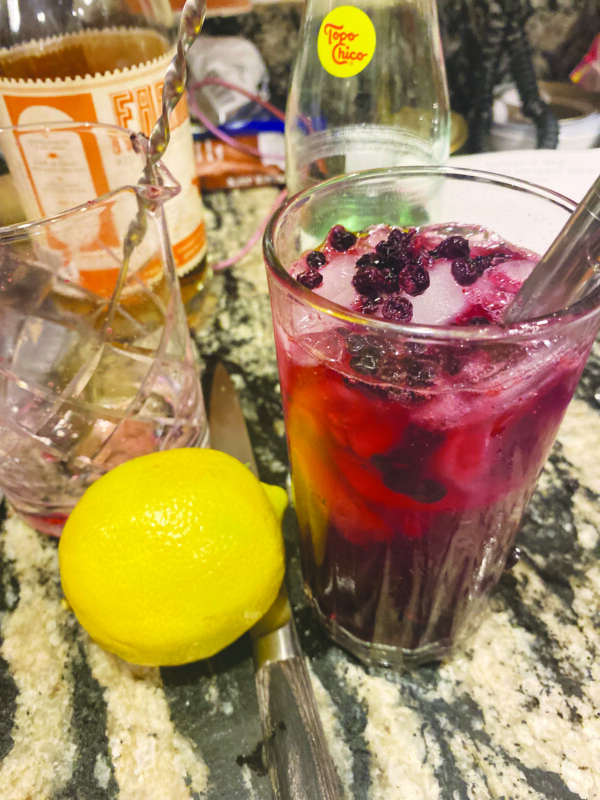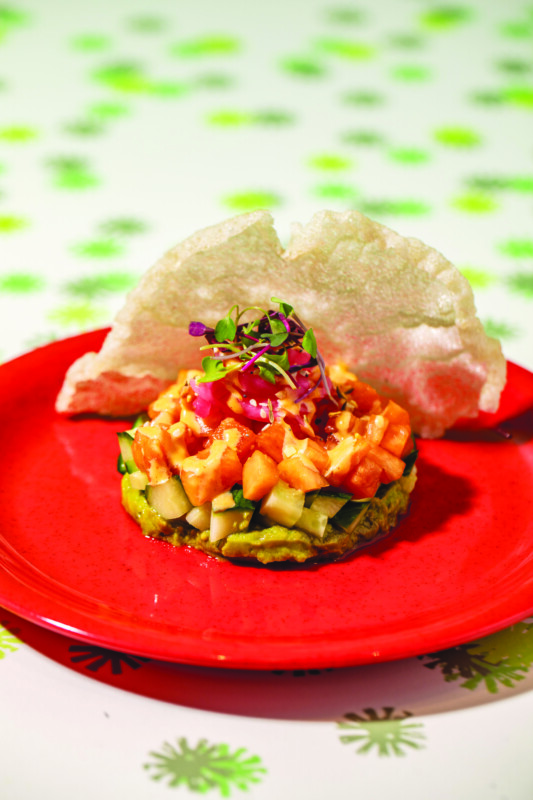Sourcing from their farm and nearby at Eden’s Table Farm Store
Given how difficult it can be to find a spicy, flavorful chile in New Hampshire, is it possible to grow one here?
“We’ve had two hot peppers that I just love!” said Addie Leader-Zavos, co-owner of Eden’s Table Farm in Dunbarton. “I was shocked by how good a pepper year we had last year. We’re trialing a bunch of different paprika types this year.” The Czech Black, for instance.
Her husband, Michael Williams, agreed.
“These [the Czech Blacks] will fake you out,” he said. “They smell like mango fruit leather, but they are serious. These are a little milder than a serrano when they’re green, but then they blow way past it when they’re ripe. They go from 5,000 Scoville units [a system for rating the heat of chiles] when they’re green to 17 [thousand] to 30,000 when they’re ripe. They’re no joke.”
This is the first full season that Eden’s Table Farm has been in business. The wife-and-husband team have been building a new farm more or less from scratch.
“We are a diversified market farm,” Williams said. “We grow vegetables. We have 65 mature blueberry bushes that we inherited. We also have a rhubarb patch that we inherited from the previous owners. There are a lot of volunteer raspberry, black raspberry and blackberry bushes; we’re going to mark the ones that taste best and take cuttings and propagate for next year.”
And, of course, the chiles.
The Williamses grow many different fruits, vegetables and herbs that they sell through their farm store, but the peppers are a good illustration of the amount of thought that is put into growing them. Leader-Zavos spent months researching varieties of chiles that would do well in New Hampshire’s climate. Eventually she discovered multiple varieties from Eastern Europe, from countries with similar climates. After that, the new farmers selected the varieties with the shortest growing season to try on the Farm.
“It was really important to us to have the shortest days-to-maturity,” Leader-Zavos said. “We wanted to be able to grow varieties that will work for us when our growing season is so short.”
Growing seasons, soil acidity, and hours of sunlight are some of the factors that Williams and Leader-Zavos have been working hard to get a handle on. Since moving from Virginia, where Leader-Zavos worked as a pastry chef and Williams was a sommelier and wine marketer, the couple have tackled the steep learning curve of starting a farm and a business with enthusiasm. “Addie’s superpower is research,” Williams said. “She can find the answer to anything.”
Which is how the two ended up buying a farm in Dunbarton. They had decided to start a small farm together.
“We cast a pretty wide net when we were looking for farm properties,” Williams said, “and at one point the price on this property dropped and it showed up in our searches. [We asked ourselves] ‘Should we go to New Hampshire to look at this property?’” They visited the farm that November, and owned it by the end of January.
In addition to actually growing things, the couple’s main focus is on their farm store, which sells their own produce and baked goods, as well as other locally produced meats, dairy, wild foods and artisanal products.
“We are very locally focused in terms of sourcing,” Williams said. “Everything in here, with the exception of a very short list of items, is from New Hampshire, and the things that aren’t from New Hampshire are from Maine, and they’re all artisanal products.”
He pointed to several varieties of dried beans as an example. “These are Baer’s Best Beans,” he said. “One of the things I like to do with new suppliers is I will go to them to pick up my first order, because I want to see what they are doing and how they’re doing it. I walked in [to Baer’s] and somebody was hand-sorting beans. So I was very happy. I was like, ‘OK, these are my people.’ This is the level of detail and attention that I like.”
Not to mention that the beans will go really well with the chiles.
Eden’s Table Farm Store
240 Stark Highway N., Dunbarton Center, 774-1811
Open Thursdays and Fridays 3 to 7 p.m., Saturdays 10 a.m. to 2 p.m.






